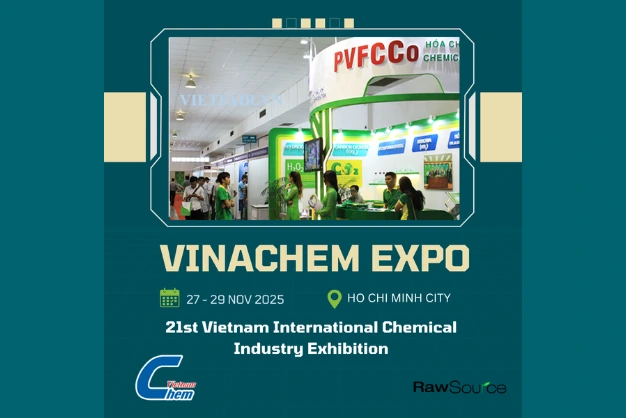Linoleic Acid: Linoleic acid is a polyunsaturated fatty acid with a straight-chain structure containing two double bonds. Naturally found in plant oils like sunflower and soybean oil, it is essential for human health, offering skin barrier repair and anti-inflammatory properties, and is widely used in skincare and nutritional supplements.
Linoleic acid has a polyunsaturated, straight-chain structure with two double bonds located at the 9th and 12th carbon atoms. These double bonds make the molecule more fluid and essential for various biological functions.
The branched structure of isostearic acid lowers its melting point, making it a liquid at room temperature, which is beneficial for formulations requiring a stable liquid state.
Linoleic acid has a low melting point due to its unsaturated nature, but it is typically higher than isostearic acid. It remains a liquid at lower temperatures, which is advantageous for skin and nutritional products.
Linoleic acid’s solubility in oils and organic solvents makes it ideal for incorporation into skincare products and nutritional supplements, enhancing product efficacy.
Known for its high oxidative stability, isostearic acid is less prone to rancidity and degradation, making it suitable for long-lasting formulations.
The presence of double bonds makes linoleic acid more susceptible to oxidation, which can lead to rancidity. This lower stability can limit its use in products requiring a long shelf life.
Melting Point: The branched structure of isostearic acid lowers its melting point, making it a liquid at room temperature, which is beneficial for formulations requiring a stable liquid state.
Stability :Known for its high oxidative stability, isostearic acid is less prone to rancidity and degradation, making it suitable for long-lasting formulations.
Chemical Structure: Linoleic acid has a polyunsaturated, straight-chain structure with two double bonds located at the 9th and 12th carbon atoms. These double bonds make the molecule more fluid and essential for various biological functions.
Melting Point: Linoleic acid has a low melting point due to its unsaturated nature, but it is typically higher than isostearic acid. It remains a liquid at lower temperatures, which is advantageous for skin and nutritional products.
Solubility: Linoleic acid’s solubility in oils and organic solvents makes it ideal for incorporation into skincare products and nutritional supplements, enhancing product efficacy.
Stability :The presence of double bonds makes linoleic acid more susceptible to oxidation, which can lead to rancidity. This lower stability can limit its use in products requiring a long shelf life.
Linoleic Acid: While it is effective at room temperature, linoleic acid’s double bonds make it more prone to degradation at higher temperatures. This limits its use in applications where thermal stability is critical.
Isostearic Acid: Exhibits stability across a broad pH range, making it suitable for diverse formulations, including those exposed to varying pH levels.
Linoleic Acid: Also stable across a range of pH levels, but its oxidative stability is a limiting factor, especially in alkaline conditions where oxidation rates can increase.
Linoleic Acid: Linoleic acid is naturally found in plant oils such as sunflower, safflower, and soybean oils. It is extracted through mechanical pressing or solvent extraction, which separates the oil from the plant material. The extracted oil is then refined to remove impurities, ensuring a high-quality fatty acid for various applications.
Isostearic Acid: The production of isostearic acid is primarily synthetic due to the need for chemical isomerization. This process allows for controlled production, ensuring consistent quality and properties. However, the synthetic nature means it is not as readily available from natural sources, which can affect its cost and sustainability.
Linoleic Acid: Linoleic acid is abundantly available in nature and is easily extracted from plant oils. This natural availability makes it a cost-effective and sustainable option for various applications. The use of renewable plant sources also aligns with environmentally friendly practices, making linoleic acid a preferred choice for those seeking natural ingredients.
Linoleic Acid: An essential fatty acid, linoleic acid plays a crucial role in skin barrier repair and has significant anti-inflammatory properties. It helps maintain the skin’s moisture balance and promotes healing, making it a popular ingredient in moisturizers, serums, and other skincare products. Its beneficial properties also make it a valuable component in health supplements and nutritional products.
Preferred in formulations requiring long-lasting stability and a lightweight feel. Commonly used in lotions, creams, and cosmetic products aimed at sensitive or acne-prone skin.
Favored for its moisturizing and healing properties, making it ideal for dry or damaged skin treatments. It is extensively used in high-end skincare products, such as serums and anti-aging creams.
Less common in health supplements due to its synthetic nature.
Widely used in dietary supplements for its essential role in human health, providing benefits for skin, heart, and overall well-being.
Used in industrial products like paints, varnishes, and as a nutritional supplement in animal feed due to its natural and beneficial properties.
Cosmetics: Preferred in formulations requiring long-lasting stability and a lightweight feel. Commonly used in lotions, creams, and cosmetic products aimed at sensitive or acne-prone skin.
Health Supplements: Less common in health supplements due to its synthetic nature.
Cosmetics: Favored for its moisturizing and healing properties, making it ideal for dry or damaged skin treatments. It is extensively used in high-end skincare products, such as serums and anti-aging creams.
Health Supplements: Widely used in dietary supplements for its essential role in human health, providing benefits for skin, heart, and overall well-being.
Industrial Applications: Used in industrial products like paints, varnishes, and as a nutritional supplement in animal feed due to its natural and beneficial properties.
Isostearic Acid: Isostearic acid is extensively used in skincare products due to its excellent emollient properties and stability. It helps to create smooth, non-greasy lotions and creams, making it ideal for cosmetic formulations. This fatty acid is beneficial in products designed for sensitive or acne-prone skin because it is less likely to clog pores. Additionally, isostearic acid’s stability ensures that these products have a longer shelf life and maintain their effectiveness over time. It’s commonly found in moisturizers, sunscreens, and anti-aging creams.
Linoleic Acid: Linoleic acid is a key ingredient in moisturizers and serums because of its ability to repair the skin barrier and provide anti-inflammatory benefits. It supports the skin’s natural barrier, helping to keep it hydrated and protected from environmental damage. Linoleic acid is also known to help reduce acne by promoting healthy cell turnover. Furthermore, it is used in health supplements to provide essential fatty acids necessary for maintaining healthy skin and overall wellness. Products enriched with linoleic acid are often marketed for their skin-soothing and healing properties.
Linoleic Acid: Linoleic acid is used in the production of paints and varnishes due to its drying properties. It helps form a hard, protective film, making these products durable and long-lasting. In addition to its industrial uses, linoleic acid serves as a nutritional supplement in animal feed, providing essential fatty acids that support animal health and growth. It helps improve the nutritional quality of feed, promoting better growth rates and overall health in livestock. Its natural origin and beneficial properties make it a valuable ingredient in both industrial and agricultural applications.
Stability: Isostearic acid is highly stable due to its branched structure, which resists oxidation and degradation, ensuring long-lasting formulations.
Less Comedogenic: The branched structure reduces the likelihood of clogging pores, making it ideal for skincare products designed for sensitive or acne-prone skin.
Higher Cost: The synthetic production process of isostearic acid is more expensive compared to naturally sourced fatty acids, which can increase product costs.
Less Natural Availability: Unlike naturally occurring fatty acids, isostearic acid is not readily available from natural sources, limiting its appeal for products marketed as natural or organic.
Essential Nutrient: Linoleic acid is an essential fatty acid required for maintaining healthy skin and overall bodily functions, making it crucial in dietary supplements and skincare products.
Excellent Moisturizing Properties: It helps to repair the skin barrier and retain moisture, providing significant benefits in moisturizers and serums.
Anti-inflammatory: Linoleic acid has anti-inflammatory properties that help reduce skin irritation and inflammation, making it beneficial for treating conditions like acne and eczema.
Prone to Oxidation: The double bonds in linoleic acid make it more susceptible to oxidation, leading to rancidity and shorter shelf life for products.
Lower Stability: Compared to isostearic acid, linoleic acid’s stability is lower, which can limit its use in formulations requiring long-term shelf stability or exposure to varying environmental conditions.
Linoleic Acid: Linoleic acid remains a staple in established markets, with increasing demand in the health and beauty sectors. Its essential role in skincare and nutrition continues to drive its popularity. Consumers are increasingly seeking products that offer natural and effective ingredients, boosting the demand for linoleic acid in moisturizers, serums, and dietary supplements. The trend towards natural and organic products further supports its market growth, as linoleic acid is a key component in many plant-based formulations.
Isostearic Acid: The production of isostearic acid involves synthetic processes, which can have a higher environmental footprint due to the energy and chemicals required. Efforts are being made to adopt greener synthesis methods to reduce this impact. The reliance on non-renewable resources also poses sustainability challenges.
Linoleic Acid: Linoleic acid is naturally sourced from plant oils, making it more sustainable. However, large-scale agricultural practices can lead to environmental concerns such as deforestation and pesticide use. Sustainable farming practices and organic certification can help mitigate these issues.
Isostearic Acid: Initiatives are focusing on developing eco-friendly production processes. Companies are investing in research to find more sustainable synthesis routes and to use renewable raw materials where possible.
Linoleic Acid: Many suppliers of linoleic acid are adopting sustainable farming practices. Certifications like the Roundtable on Sustainable Palm Oil (RSPO) and organic certifications ensure that the production is environmentally friendly and socially responsible. These initiatives promote the use of sustainable and ethically sourced plant oils.





